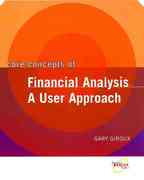Question
1. Joel Greenblatt is the founder of the hedge fund Gotham Capital and an adjunct professor at Columbia University (where Stephen Penman, our books author,
1. Joel Greenblatt is the founder of the hedge fund Gotham Capital and an adjunct professor at Columbia University (where Stephen Penman, our books author, teaches). From 1985 to 2006, Gotham Capital reported annualized returns over 40 percent. In 2005, Mr. Greenblatt published The Little Book that Beats the Market, which presented an investment strategy of magic formula investing based on a screen of earnings yield & return on capital. In fact, Mr. Greenblatt has a website dedicated to the book. With a free registration, one can create their own investible set of stocks.What could possibly go wrong with this portfolio? Is investing truly this easy?
2. A popular investor strategy is to create a portfolio of successful, mature companies that have a history of increasing dividends. For the investor seeking income, this approach mimics the benefits of a bond portfolio regular payments. However with increasing dividends, the investor receives a larger payout year after year. That is, imagine a $1,000,000 portfolio with a current 3.5 percent dividend yield, in twenty years with dividend growth stocks, the dividend yield may be 15 percent on the original $1,000,000 investment with the potential for capital appreciation as well.
Money Magazine assembled a panel of experts to discuss the wisdom in creating a dividend growth portfolio and included a chart as to why Dividends Matter http://time.com/money/3926812/dividend-growth-stocks-panel/
Evaluate this investment strategy holding a portfolio of companies with the prospect of increasing dividends in light of Penmans (pp. 93 - 95) argument that dividends dont matter. Use your own words, not the textbooks.
3. Acmes December 31, 2015 and 2016 balance sheet lists shareholders equity of $800,000 and $900,000 respectfully. Assume ACMEs transactions with shareholders during 2016 included (1) dividends declared and paid in the amount of $50,000 and (2) stock options exercised with an exercise price of $75,000, but with a market value of $200,000, and (3) treasury repurchases (i.e., stock buybacks) of $200,000 for shares that were originally issued for $60,000. What is the 2016 net income assuming no other comprehensive income?
Step by Step Solution
There are 3 Steps involved in it
Step: 1

Get Instant Access to Expert-Tailored Solutions
See step-by-step solutions with expert insights and AI powered tools for academic success
Step: 2

Step: 3

Ace Your Homework with AI
Get the answers you need in no time with our AI-driven, step-by-step assistance
Get Started


